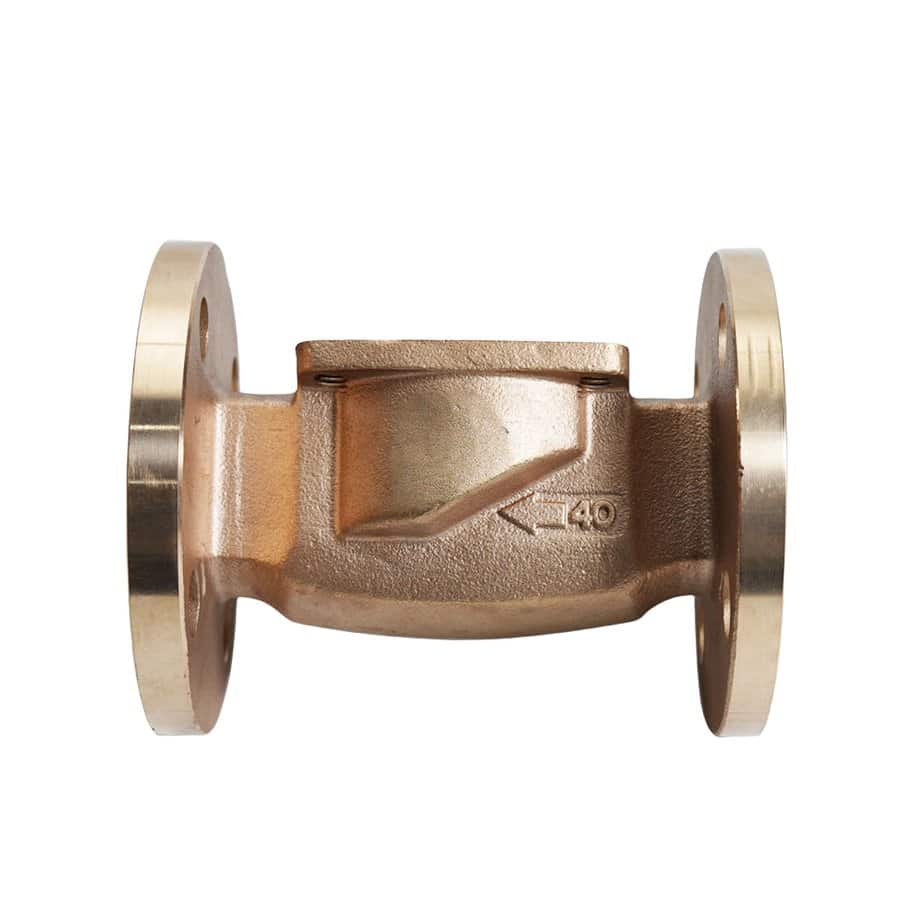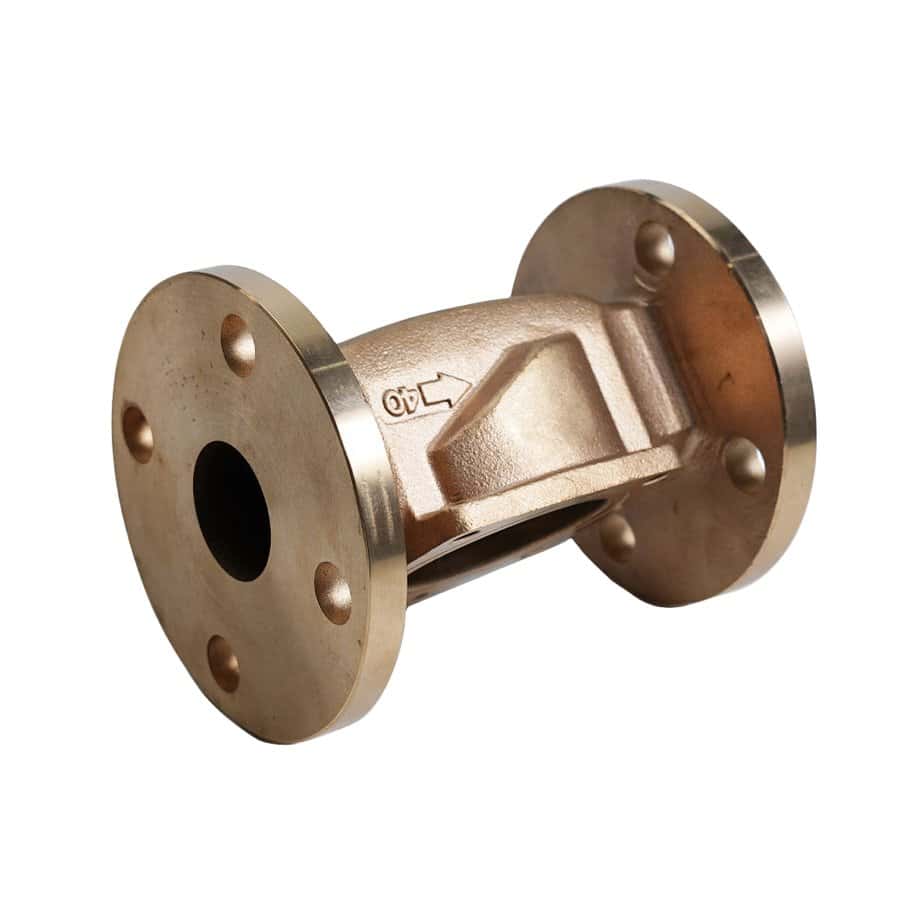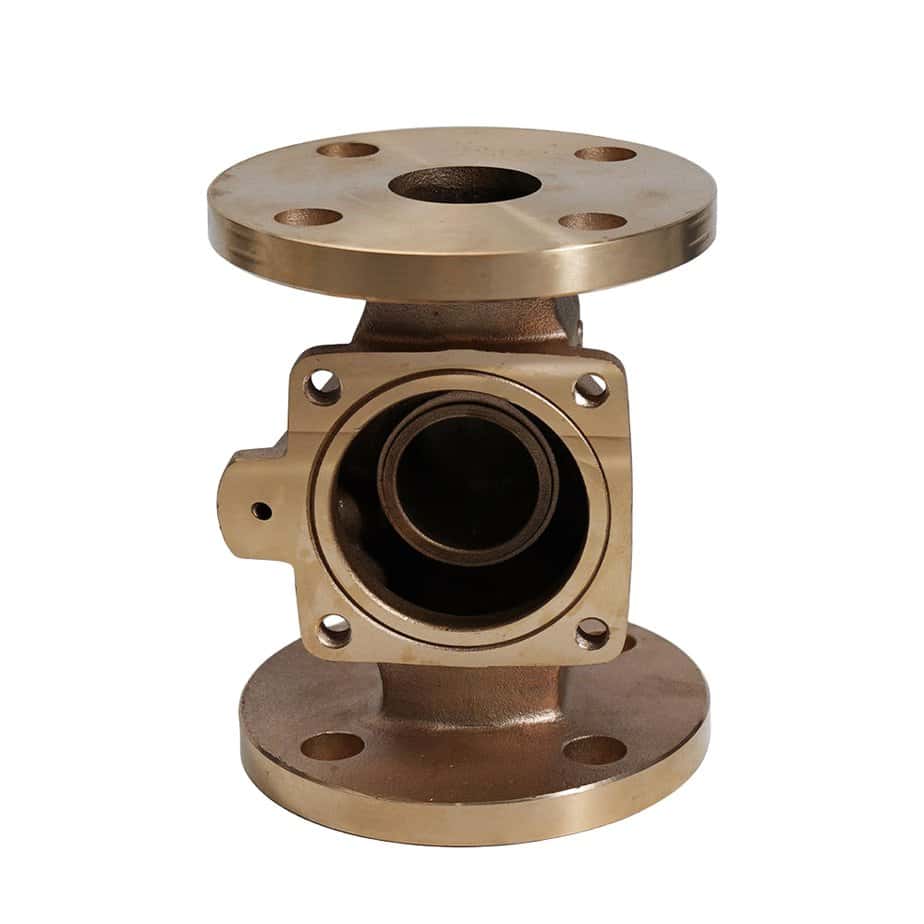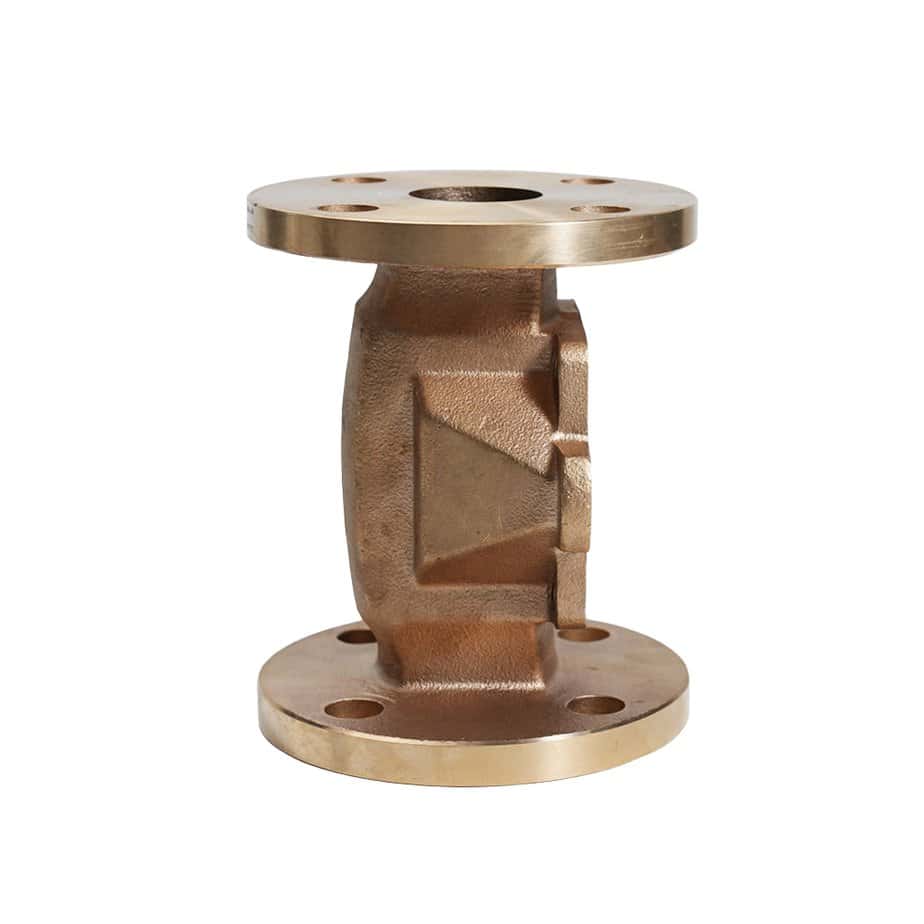Description
Manufacturing Lead Bronze Flanged Valve Body
JX-0869
- Also available in 1/2″ -4″ sizes
- Flanged valve body
- Customize design
- Bronze, bronze lead
- 400 Psi. rating
How to Manufacture Lead Bronze Flanged Valve Body:
Understanding the meticulous processes of manufacturing lead bronze flanged valve bodies gives one a deeper appreciation for their quality and functionality. Let’s delve into the nitty-gritty of this intricate procedure.
Alloy Preparation: Crafting the Perfect Mix
Starting with the right blend is paramount. The specific percentages of copper, tin, and lead are carefully weighed to achieve the ideal alloy composition. The blend ratio can vary based on specific requirements, but the goal is always to achieve a mix that ensures durability, machinability, and corrosion resistance.
Precise Melting Techniques
a. Induction Melting:
Using electromagnetic induction, the metals are melted swiftly, reducing impurities. The process allows for accurate temperature control, ensuring the alloy maintains desirable properties.
b. Protective Atmosphere Casting:
To avoid oxidation and maintain purity, casting occurs in a controlled atmosphere, often under a layer of non-reactive gas. This method ensures the molten lead bronze remains uncontaminated during the casting process.
Modern Mold Techniques
a. Investment Casting:
A wax model of the valve body is first created. It’s then coated with a ceramic slurry, forming a shell around the model. Post-hardening, the wax is melted out, leaving a ceramic mold. The lead bronze is then poured into this mold, providing intricate detailing.
b. Centrifugal Casting:
The molten alloy is poured into a rotating mold for a uniform structure. This rotation forces the metal to the mold’s walls, resulting in a dense and detailed valve body.
Advanced Heat Treatment
Isothermal Annealing: This technique involves heating the cast valve body to a specific temperature and maintaining that temperature for an extended period. This process refines the grain structure, enhancing the valve body’s mechanical properties.
Precision Machining
a. 5-Axis CNC Machining:
Modern valve bodies are often machined using 5-axis CNC machines. This technology allows the equipment to move around the piece on five different axes simultaneously, ensuring intricate cuts and high precision.
b. Laser-guided Measurement:
Post-machining, a laser-guided tool measures the valve body’s dimensions to ensure they’re within the specified tolerances.
Flange Crafting
Flanges are meticulously crafted, ensuring a snug fit. Combining high-speed cutting tools and precision drills creates bolt holes, ensuring they align perfectly with connecting parts.
Innovative Surface Treatments
Nano-coating Technology: Beyond traditional electroplating, nano-coating offers superior corrosion resistance. This coating bonds with the valve body at a molecular level, ensuring longevity.
Rigorous Testing Mechanisms
a. Ultrasonic Testing:
Beyond the traditional pressure tests, ultrasonic testing detects internal and surface flaws using high-frequency sound waves.
b. Digital Flow Rate Testing:
Modern valves undergo digital flow rate tests, where sensors measure and ensure the valve allows the desired flow rate when opened to specific positions.
Conclusion
Crafting a Lead Bronze Flanged Valve Body is an amalgamation of art and science, where traditional methods meet modern technology. Each meticulously planned and executed step is a testament to engineering excellence, ensuring that these valves stand the test of time in any application.




